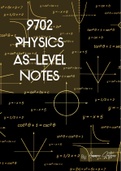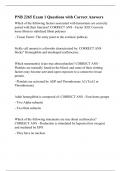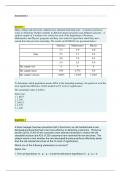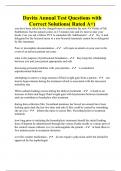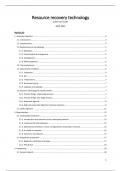GCSE Physics Notes
PAPER II
Forces
Scalar and Vector Quantities
• Scalar quantities only have a magnitude (size) but do not have a direction
• E.g, distance, mass, speed and time
• Vector quantities, however, have a magnitude and direction
• E.g, velocity, displacement, acceleration, force and momentum
• To represent vectors, we use arrows where the length of the arrow represents
the magnitude if the vector and the direction the arrow is pointing to represents
the direction of the vector
• Because vectors can have direction, they can be positive or negative and this
would show direction – scalars can only be positive
Contact and Non-contact Forces
• A force is a push or pull that acts on an object due to the interaction with another
object
• All forces are vector quantities so have both a magnitude and direction
• The unit of force is the newton (N)
All forces can be divided into 2 categories:
(1) Contact
(2) Non-contact
• Contact forces are exerted when two objects are physically touching whilst non -
contact forces are exerted when the two objects are physically separated
• Examples of contact forces are friction, air resistance, tension (the pulling force
exerted through a tight rope) and the normal contact force (the equal and
opposite force exerted by an object against another object’s weight)
• Examples of non-contact forces are gravitational, magnetic and electrostatic
forces (they are fields of influences, like magnetic fields)
,Major topics Low stakes topic TJNOTES
Gravity and Weight
• Gravity is a non-contact force of attraction between all objects with mass
• Gravity, like all forces, has a magnitude and direction so is a vector quantity
• Mass tells us how much matter is within an object and the unit of mass is the
kilogram (mass is scalar)
• Mass is constant no matter where the object is – if the mass of a person on Earth
is 70kg, they will be 70kg in mass no matter where they are in the universe
• Weight, however, is measured in Newtons and is a force
• Weight will vary depending on where the object is (depending on the strength of
the gravitational field)
• The strength of the gravitational field depends on what planet it is – here, on
earth, the gravitational field strength is 9.8N/kg
• So, for every kilogram of mass, an object will exert 9.8N of weight downwards
onto the Earth.
The equation to calculate weight is:
𝑊 = 𝑚𝑔
• Weight = mass x gravitational field strength
• Weight is measured in Newtons - N
• Mass is measured in kg
• Gravitational field strength is measured in N/kg
• We can tell from this equation that the weight is directly proportional to the
mass of the object – meaning that, if we double the mass, then the weight also
doubles if we keep the gravitational field strength the same
• We can determine weight by using a calibrated spring-balance (newton meter)
• The centre of mass is the single point where the weight is considered to act
,Major topics Low stakes topic TJNOTES
Resultant Forces
• Free body diagrams show us all the forces acting on an object using force arrows
Free body diagram of a plane mid-air:
• All of these forces are acting in different directions so some of them are going to
cancel each other out – if we take this into account, what we have left is the
resultant force
• Hence, the resultant force is a single force that has the same effect as all of the
other forces acting on an object – it is the overall force
• We can do so quite simply when the forces are opposing each other
• If we look at the horizontal component of the plane’s free body diagram:
• Here, we would do 120,000 – 90,000 = 30,000N to the right (remember force is a
vector quantity), we will later see that this resultant force means that the object
is accelerating to the right
In terms of the vertical component:
, Major topics Low stakes topic TJNOTES
• 80000N-80000N = 0N so there is no vertical resultant force, the plane maintains
a constant altitude
This means that all these initial forces can be replaced by a single, resultant
force:
3
• But the only reason this is so simple is that the forces oppose one another, but
what if we wanted to calculate the resultant force of two forces that weren’t
opposite to one another? We wouldn’t simply be able to take them away from
each other
• We would need to draw a scale diagram
Question using scale diagram:
• 1N=1cm, to make it easier but as long as your scale is constant throughout, it
does not matter:
• After drawing this, all we simply do is complete it to make a parallelogram like
so:



